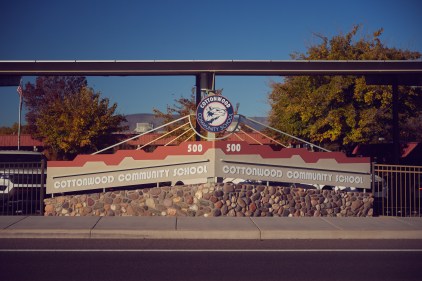Idaho lawmakers are discussing a proposal that would make it easier for school districts across the state to repair and replace their aging buildings.
Idaho is one of two states that require two-thirds of voters to approve a bond, which is one of the few ways a district can secure funding to build new school facilities. The Idaho Statesman and ProPublica have reported this year how this threshold has stymied districts from fixing or replacing antiquated boilers, leaking roofs, failing plumbing, overcrowding and inadequate building security.
As lawmakers head into the legislative session in January, prominent Republicans say they’re now considering ways to change the Idaho Constitution and the two-thirds supermajority requirement.
Drafts of a potential resolution are still in the early stages, and the effort is being headed by Rep. Rod Furniss, a Rigby Republican who represents the legislative district encompassing Salmon, where the school district tried and failed to pass a bond six times in seven years.
Lowering the threshold would require support from two-thirds of legislators, and a majority of voters would need to approve the constitutional amendment on the ballot.
Hundreds of students, educators and school administrators have told the Statesman and ProPublica about the ways school building conditions impact their daily lives. Some have argued it’s nearly impossible for school districts to reach two-thirds support in communities that are low-income or have older households with no kids in school, and it’s creating inequity among districts.
James Gilbert, superintendent of the Mountain Home School District, told the Statesman and ProPublica that school repairs “just continue to add up, and there is no real funding solution to address the issues unless bonds or levies are passed.”
Since 2006, fewer than half of all school bonds have passed. Had a simple majority been required, as is the case in most other states, around 80% of them would have been approved, an analysis by the Statesman and ProPublica found.
Legislators have done little to address the problem despite an Idaho Supreme Court ruling in 2005 that declared the state’s funding system for school infrastructure unconstitutional and tasked lawmakers with making sure facilities were properly funded.
“People are generally getting more and more dissatisfied with the fact that we’re not able to address our aging facilities in public education,” Sen. Dave Lent told the Statesman.
Lent and Rep. Wendy Horman, both Republicans, discussed the proposal during a town hall meeting in Idaho Falls last week. Lent, who chairs the Senate Education Committee and determines the bills introduced by the panel, told the Statesman he plans to co-sponsor the resolution. Horman co-chairs the influential Joint Finance-Appropriations Committee, which sets the budgets for all state agencies every year.
In the past, proposals to lower the supermajority have failed to gain traction.
In 2017, a resolution that would have started the process to lower the threshold to 60% never made it out of a legislative committee. Lawmakers who oppose changing the supermajority have said there should be a high threshold to impose taxes on a community.
“Unless an existing school actually falls to the ground and becomes unusable, I don’t perceive them ever passing a bond,” Josh Tolman, a former Salmon school board member, previously told the news organizations in an interview.
Furniss said in an interview that lawmakers are discussing ways to reduce the vote threshold in elections when turnout is high. That way, bond measures wouldn’t fail with 65% support in high-turnout years — what would be a blowout election in any other race.
On the whole, Furniss expects that “quite a few more bonds might pass,” but only in situations where the election adequately gauges the “will of the people.”
Furniss said lawmakers have looked at systems used in other states, including Montana and Alaska. Montana requires a smaller majority in high-turnout elections and a larger majority in low-turnout elections. But if turnout is low enough, a bond automatically fails, which is one reason Furniss said some lawmakers in favor of reform are leaning against the idea.
Furniss said a different option he favors is to lower the threshold districts would need to meet in years that have historically high turnout. For example, bond measures on the ballot during presidential election years might require a simple majority while those in midterm years could require 60%.
Lent and Furniss acknowledged that lowering the threshold for bonds would be a heavy lift, given that it would need support from two-thirds of lawmakers in Idaho’s conservative Legislature. But Lent said lawmakers are committed to finding ways to help school districts upgrade aging facilities and address maintenance problems.
Lawmakers plan to “take the temperature” once the session starts to determine the proposals that will get the most traction, Lent said. Legislators are also looking at other options to help school districts with their aging facilities, including offering more state funding.
“Our first priority is to figure out a way to have greater state participation and relieve the pressure on local property taxes for facilities,” he said. “We definitely want to have lots of options to see what we can get done.”


















